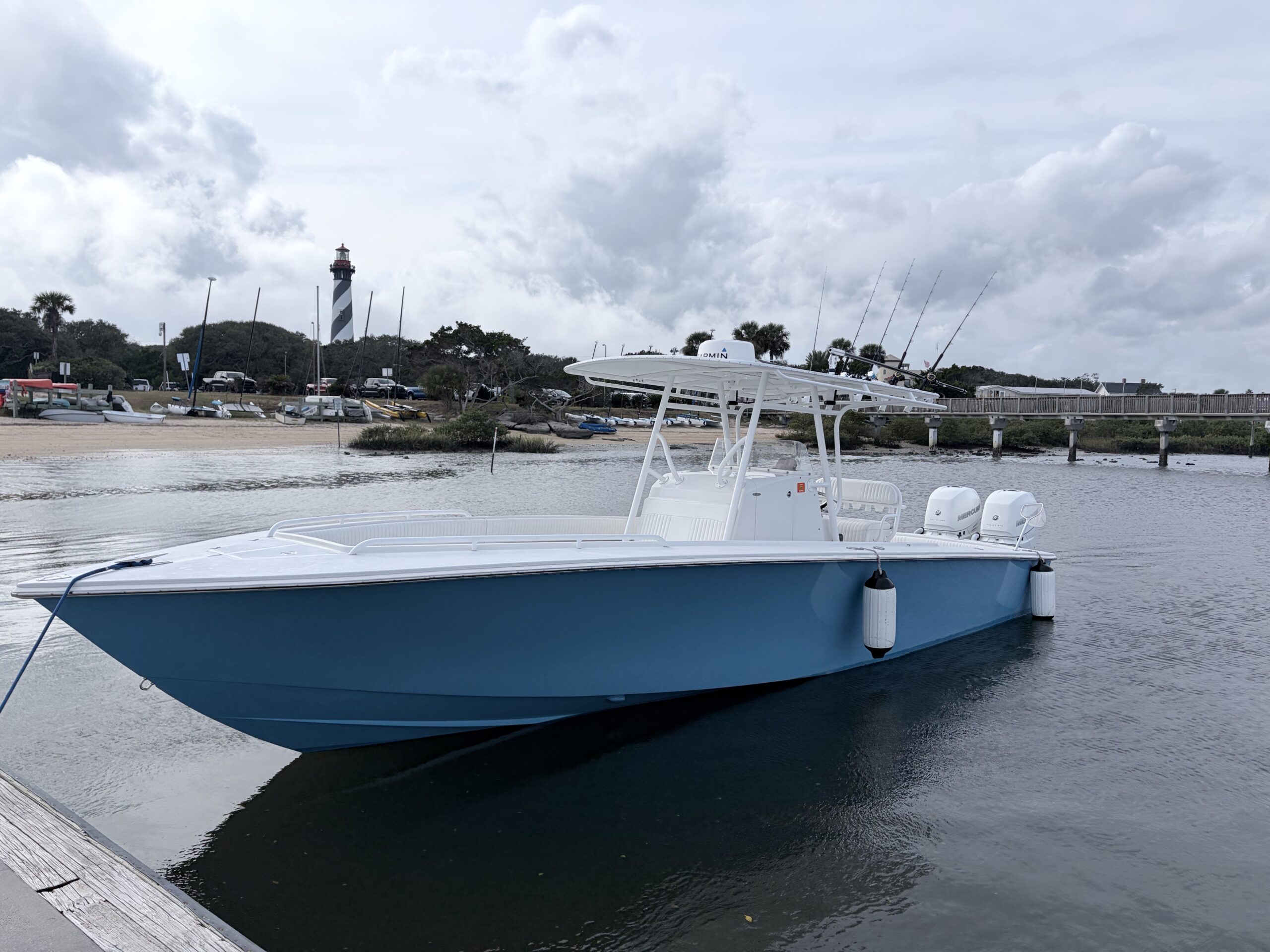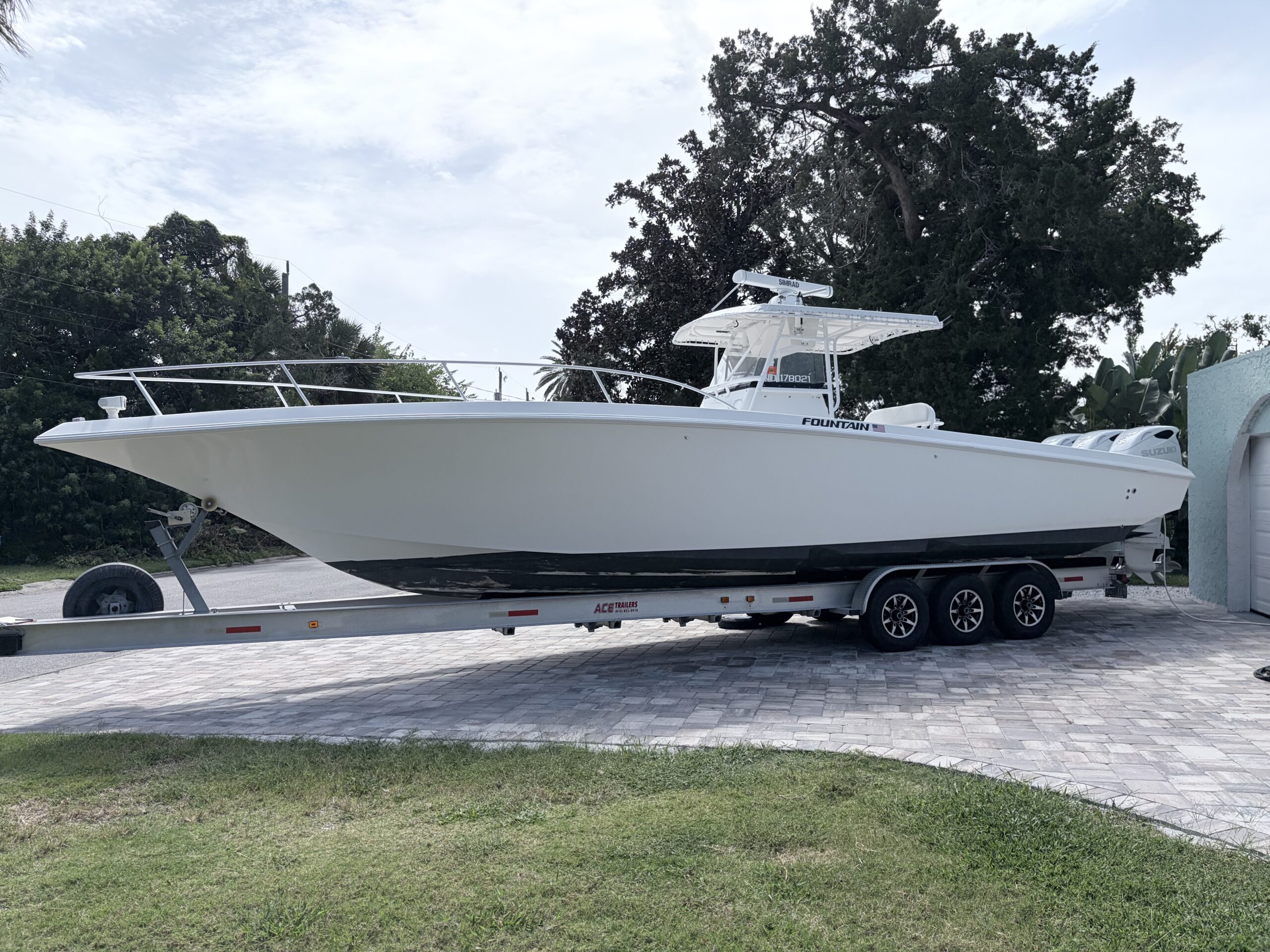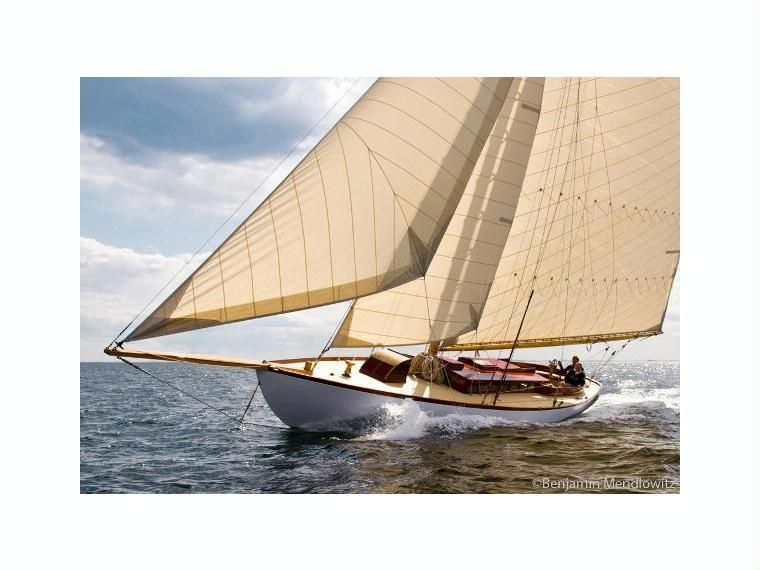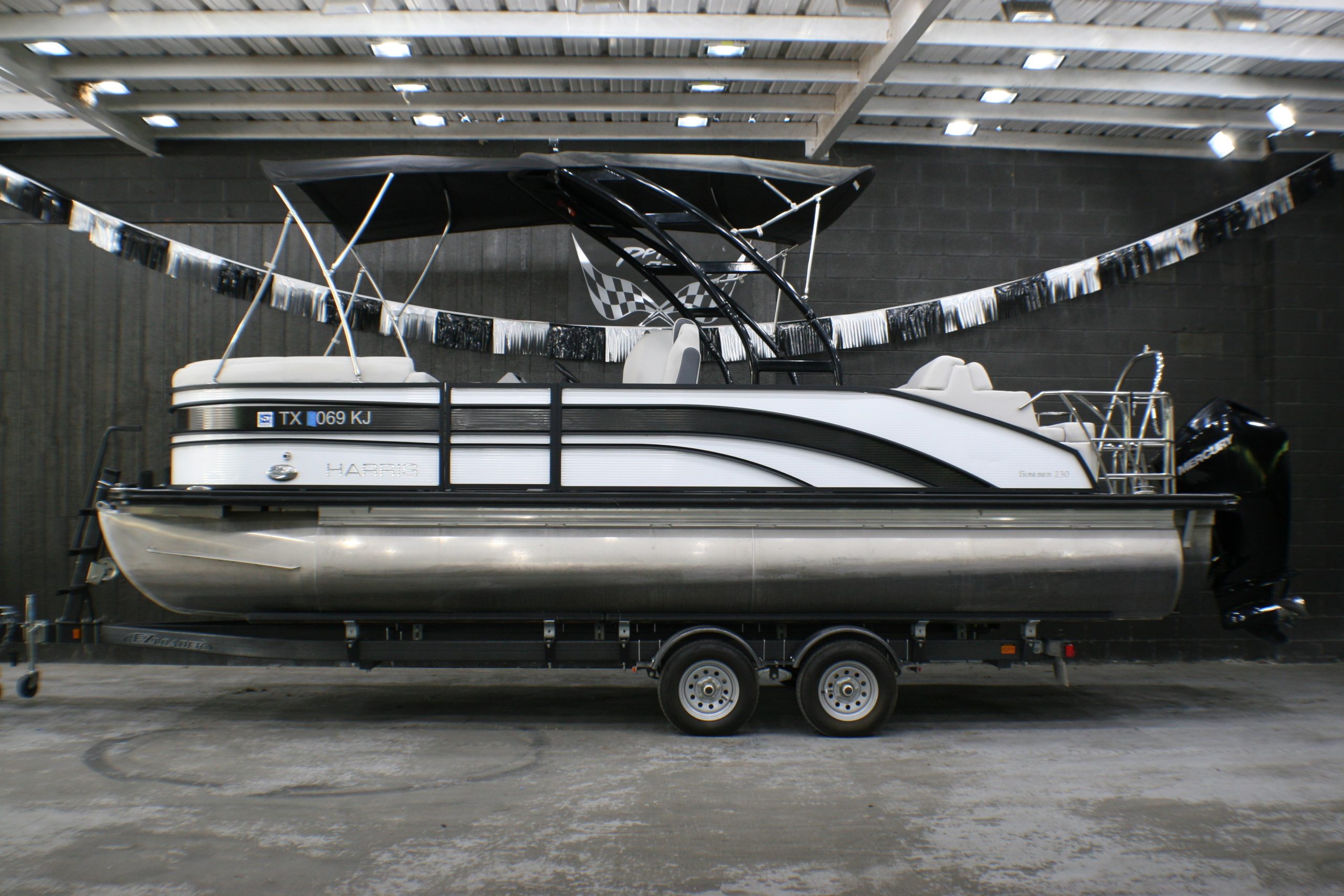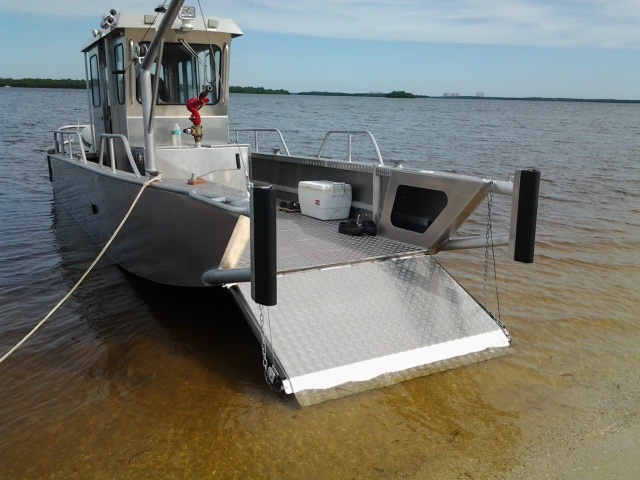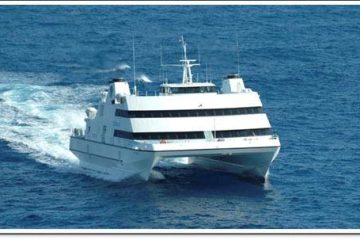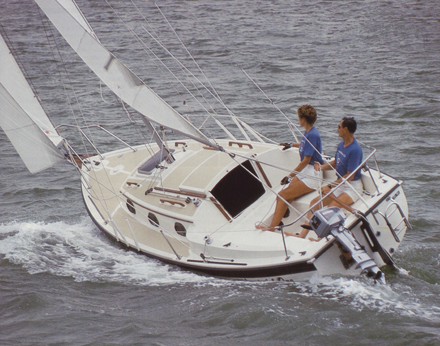

Com-Pac 23
Description
Com-Pac 23
In 1972, the Hutchins Company of Clearwater, FL, introduced the Com-Pac 16, a trailerable mini-cruiser. The model was tremendously successful and led to a larger version, the Com-Pac 23, which was introduced in late 1978 with the 1979 model year. Since then, Hutchins has introduced models ranging in size from 19 to 35 feet, all following the same styling of these early models. The Com-Pac 23 was designed by Florida boatbuilder and designer Clark Mills. His name may not be instantly recognized by many sailors but his most noted design, the Optimist Pram, is very familiar to sailors and unquestionably one of the most successful sail training and dinghy class racers ever.
Originally 22′ 9″ LOA, the Com-Pac 23 grew to 23′ 11″ with the addition of a bowsprit in 1984. The specified waterline length has remained 20′ 3″as has the draft at 2′ 3″ and beam at 7′ 10″. The manufacturer’s specified displacement was 2,900 lbs. prior to 1984 and 3,000 lbs. after. Internal ballast is 1,340 and is a combination of lead and concrete.
The hull of the of the Com-Pac 23 is built of a solid laminate of fiberglass cloth and resin and, since 1994, vinylester resin has been used in the outer layer to aid in preventing osmotic blistering. The deck and trunk cabin are molded as a single piece, and foredeck and side decks are constructed with a foam center core. The deck and hull are joined on an outward flange with adhesive sealant and fastened with pop rivets or nuts and bolts depending on the date of production. The flange is then finished with a vinyl rub rail over the fasteners.
Com Pac 23
Rather than the molded fiberglass interior liners used by most production builders of boats in this size range, Hutchins strengthens the hull with athwartship and longitudinal plywood frames and bulkheads tabbed to the hull with fiberglass cloth. This method of construction has the advantage of being easily inspected and the overall quality of construction is a cut above the production boats of this size. I think Hutchins could have been a lot better with just a little more effort. Bulkheads are not attached on both sides or over their entire length and there are no fillets at attachments to ensure strong and neat joints. The main structural bulkhead supports the hull sides at the chain plates and the cabin top at the mast step is drastically cut away so the interior is more open. Buyers should look carefully in this area for movement of the bulkhead or distortion of the hull side, decks or cabin top.
The deck area is about evenly divided between cockpit space, cabin trunk and foredeck. The self-bailing cockpit is over seven feet long and offers comfortable seating and two seat lockers for storage. Secure footing on the cabin top, side and foredeck is ensured by a molded nonskid pattern. There are bow and stern rails as well as lifelines supported by stainless steel stanchions along each side.
The Com-Pac 23 is, by design, a miniaturized version of a larger boat, which is apparent inside as well as out. Berths are not quite as long or wide as you would like, sitting and standing headroom is limited and there is little privacy, but all the essentials are there. There are berths for four and a self-contained toilet between the v-berths. The galley, a sink to port and stove to starboard, are cleverly designed to slide out of the way beneath the cockpit&s seats when not in use and there is a portable ice chest. There are three opening ports on each side of the cabin trunk, an opening hatch forward plus the companionway for excellent ventilation. The majority of Com-Pac 23s are powered by outboard engines ranging from 8 to 9.9 hp although, in 1989, Hutchins began offering an optional 9 hp Yanmar inboard diesel engine.
The displacement/length ratio of the 23 is 163 and sail area/displacement ratio is 19.2, which combine to make for an easily driven boat with sufficient sail area for a very respectable turn of speed. The 45% ballast to displacement ratio and moderate waterline beam allow the 23 to stand up well to a stiff breeze. On the negative side, draft is a scant 2′ 3″, rigging shrouds are attached at the deck edge, making close sheeting angles difficult to achieve, and the kick-up rudder is a flat aluminum plate with squared off edges. These factors combine to make the 23’s performance to weather less than stellar.
The Com-Pac 23 has been in production for more than 40 years, so interested sailors can choose from a good supply of used models as well as new. Many 23s are sold with trailers and although the boat is legally trailerable, at 3,000 lbs., it will take a full-size car or sport utility vehicle with an eight-cylinder engine to comfortably pull this load.
When you consider size, accommodations, shallow water capability, quality of construction and cost, the Com-Pac 23 is tough to beat and would be a great little boat for the weekend cruiser or cruising couple for whom shallow draft ranks near or at the top of their priority list.
Featured Listings
More from Boat Listings
You may also like...
Popular Boat Brands
- Albin
- Azimut
- Bayliner
- Beneteau
- Bertram
- Boston Whaler
- C&C
- Cape Dory
- Carver
- Catalina
- Cheoy Lee
- Chris Craft
- Contender
- Formula
- Grady-White
- Grand Banks
- Gulfstar
- Hatteras
- Hinckley
- Hunter
- J/Boats
- Jeanneau
- Lagoon
- Luhrs
- Mainship
- Morgan
- Nordhavn
- Ocean Alexander
- Pearson
- Pursuit
- Regal
- Sabre
- Sea Ray
- Silverton
- Sunseeker
- Tartan
- Tiara
- Viking
- Wellcraft
BoatNation.com is a member of the following associations:
- International Marine Association ®
- Marine Industries Association of South FL
- International Yacht Brokers Association


